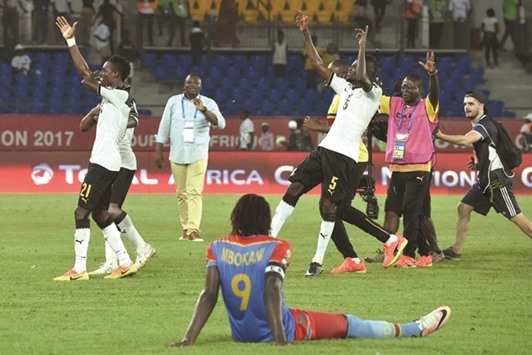Built in rainforest outside Gabon’s fourth largest town as one of the venues for the Africa Cup of Nations, the Oyem stadium risks becoming a white elephant now the tournament has moved on.
Ghana beat DR Congo at the venue in the quarter-finals on Sunday, the last of seven matches to be played at the stadium during the competition.
It is anyone’s guess when the next game will be held. Not least because construction work has not actually finished, and is not likely to be completed until June according to those in charge at the site.
The 20,000-seat stadium is impeccable on the inside and meets the standards of both the Confederation of African Football (CAF) and FIFA.
Its setting is remarkable too, but diggers are still present around the ground and around 100 Chinese construction workers were still putting the finishing touches to the green spaces, car parks and planned 20-room hotel while games went on.
“The government’s objective will be to make this stadium the economic hub for the Woleu Ntem region,” Franck Domingo, in charge of construction, told AFP, explaining that the idea is to create 2,000 jobs by the end of 2017.
The idea, set out by former sports minister Blaise Louembe when the foundation stone was laid in September 2015, was certainly ambitious.
Louembe called it “a veritable opportunity to make this place the centre point of an urban development project out of which a new town can blossom with housing, shops, schools and other amenities”.
The stadium is 17 kilometres from Oyem itself, but Domingo said that will help “develop the villages round about”.
Yet Pierre Mba, a resident in the neighbouring village of Assok-Ngomo, insisted the running water and electricity that were supposed to come with the stadium had not yet appeared.
“For me, the Africa Cup of Nations, this stadium, are things to be proud of, not only for Oyem but for my village,” he said.
“But we are angry because none of what we have been promised has arrived.”
The issue will be resolved within three months according to those in charge of the site.
Meanwhile, local inhabitants wonder what the stadium will be used for in future and how financially viable it can be after costing 75mn euros ($80mn) to build according to certain sources.
Porcupine hunting
Vincent Essono Mengue is an independently elected mayor and former minister who calls the project a “terrible waste”.
“If we had money to spend somewhere it would not be on the Africa Cup of Nations. We need more roads. We have patched up the ones that are there just so that when you (the visitors) come you don’t see the holes,” he told AFP.
Remy Ebanega, the president of the professional players’ union in Gabon, shares that view.
He does not see how US Oyem, the leading local team where he started his career and who now play in the country’s second division, can fill the ground all year round.
“Given that already for the Cup of Nations nobody is going to the stadium, imagine what it will be like for a Gabonese league game,” he said to AFP.
He has a point — for the last three matches played at Oyem during the competition the crowd never went above 8,000. The town’s population is around 70,000.
Ebanega says the stadium’s location is off-putting.
“A taxi to get there will cost more than the ticket for the match! You need a lot of money just for that, so if someone had the motivation to come and watch they could not,” he said.
But does that mean it will become a white elephant?
The town councillor, who remembers a similar project for a “summit of the Organisation of African Unity”, is convinced of it.
“The late president (Omar) Bongo thought it was a good idea to construct a beautiful place far from everything else.
“Today you go can go there and hunt porcupines and such like,” he said, adding that he hopes to still be alive in 10 years to see what becomes of the stadium.

DR of Congo forward Dieumerci Mbokani watches Ghana players celebrate at the end of the 2017 Africa Cup of Nations quarter-final in Oyem, Gabon, on Sunday. The match, which Ghana won, was the last of seven matches to be played at the stadium during the competition. It is anyone’s guess when the next game will be held. (AFP)


